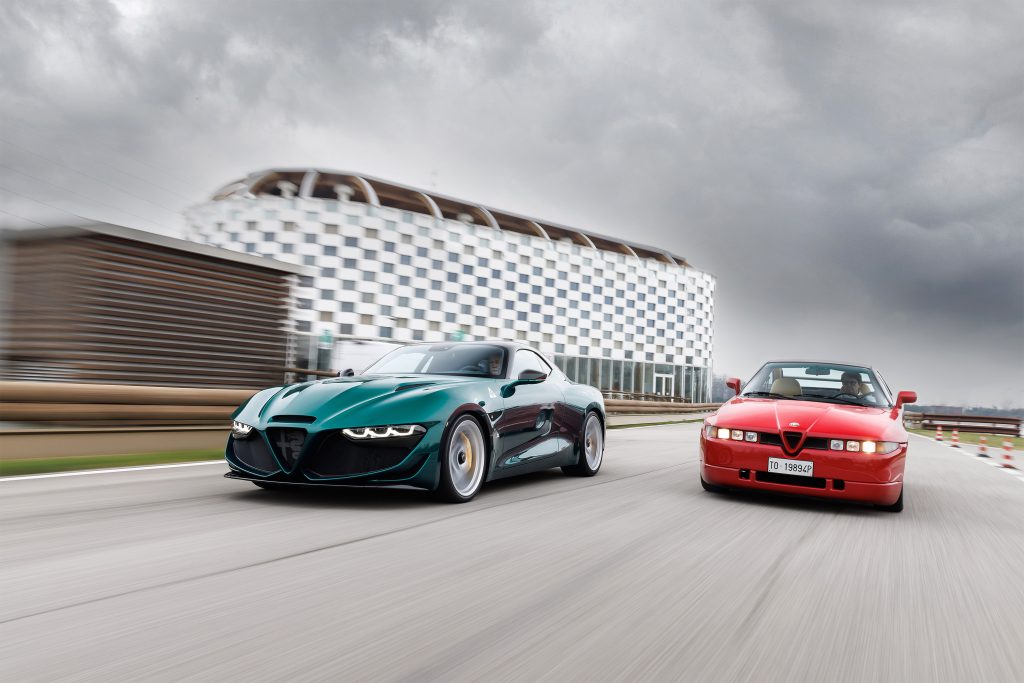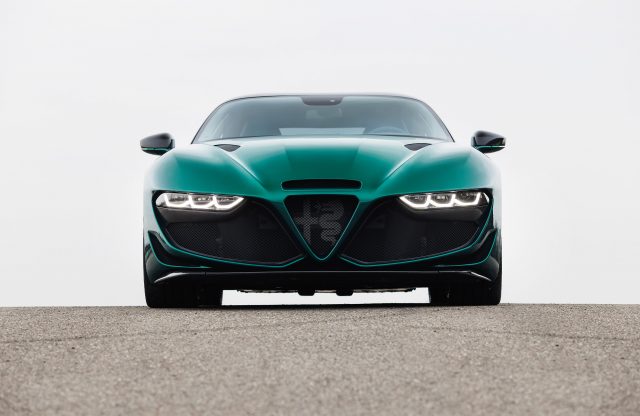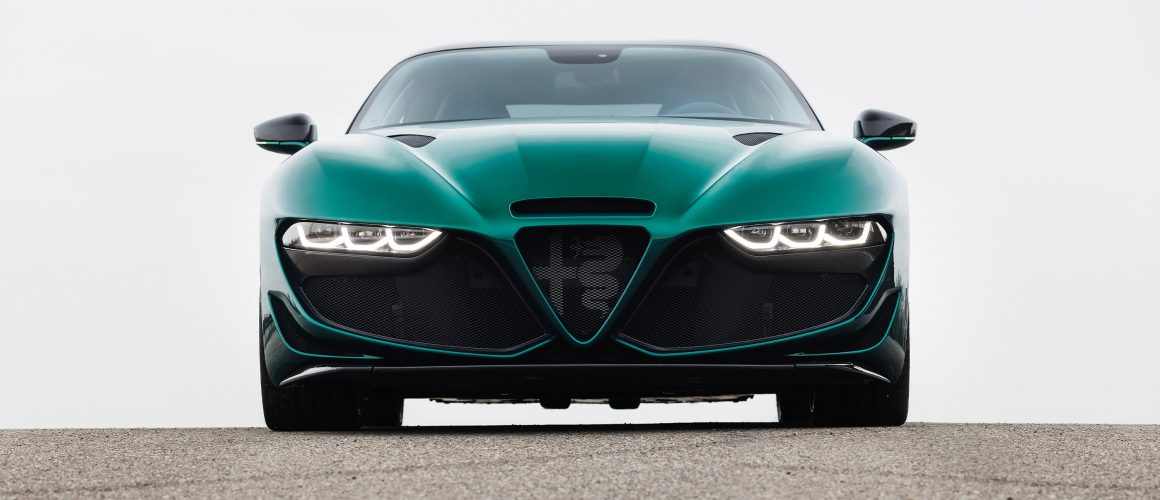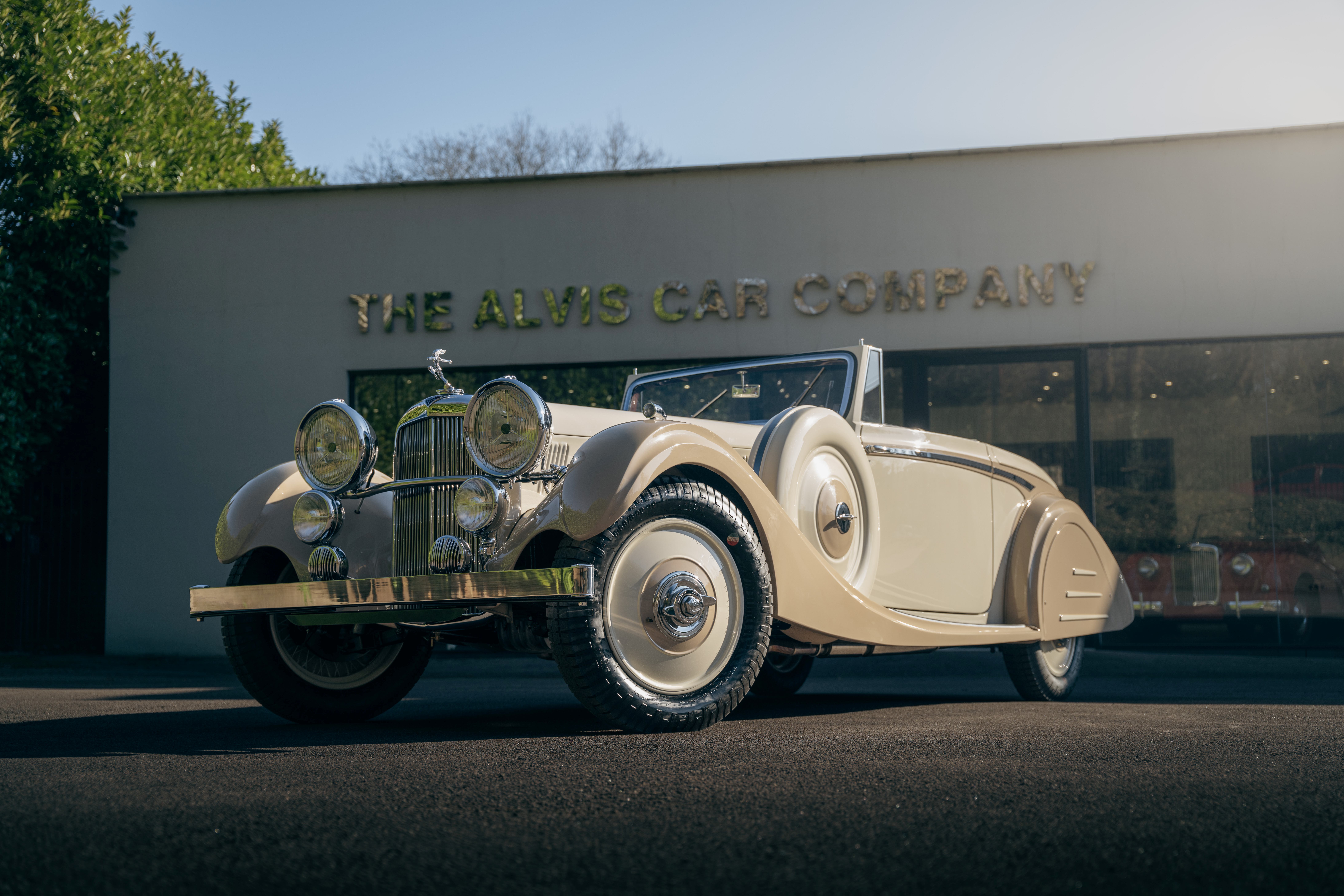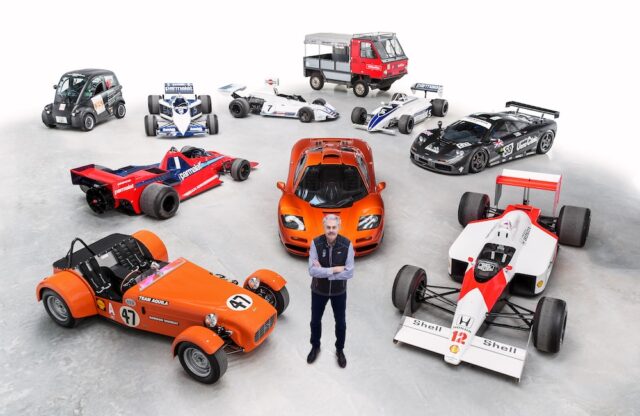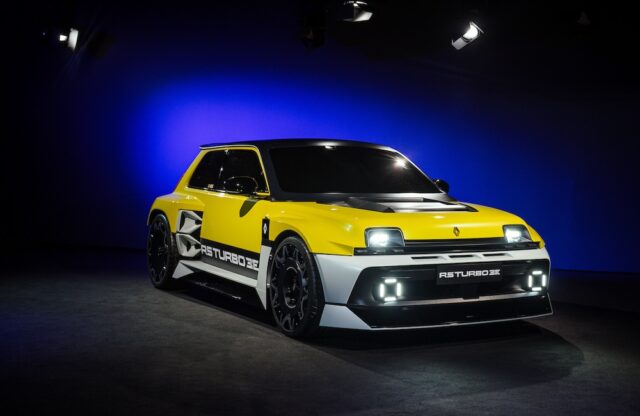Words: Nathan Chadwick | Photos: Zagato
Where Alfa Romeo teased us with tantalising dreams of a two-door Giulia before dashing them, Zagato has come through with this – the Giulia Quadrifoglio-based Giulia SWB Zagato.
The transformation is dramatic – turning a four-door saloon into a two-door is no easy task – but the results look breathtaking. They bring forth traditional Zagato design cues such as a double-bubble roof, while also maintaining Alfa Romeo’s current and future styling cues, like the six-light front from the Tonale and Giulia facelift, which itself references a Zagato-built car of the past, the SZ.
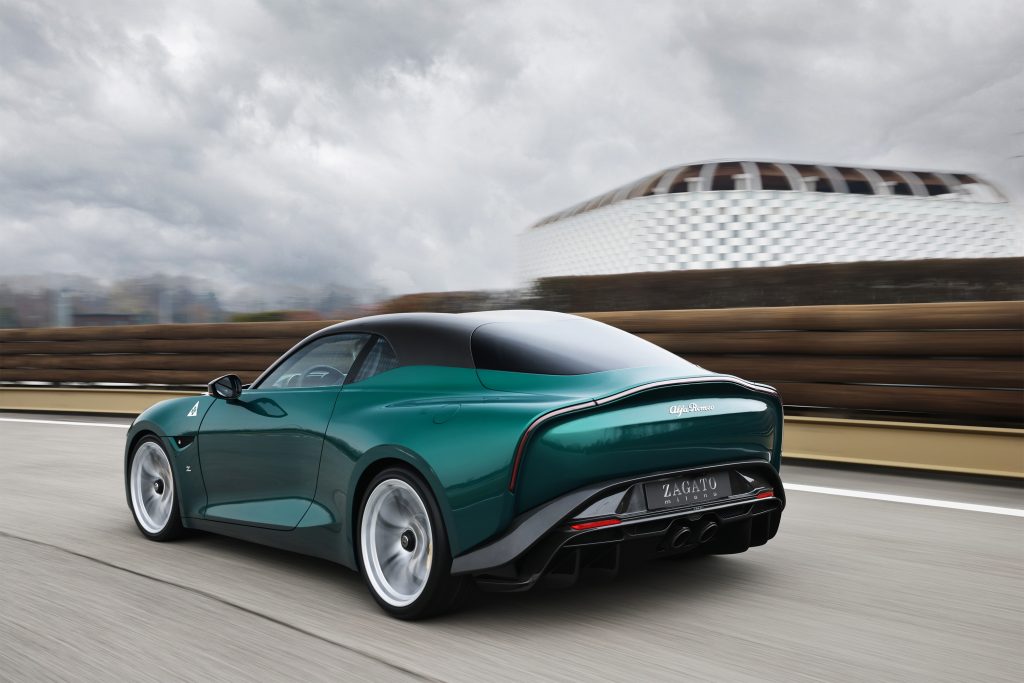
The car itself is – at the moment – a one-off for a German Zagato collector who has an Alfa Romeo 8C Competizione and SZ, as well as several Zagato-styled Aston Martins. While the concept and development was entirely by Zagato, Alfa Romeo’s head of design Alejandro Mesonero collaborated with Zagato’s designer Norihiko Harada to produce the car’s final form.
“The design of the prototype Giulia SWB (short-wheelbase) Corsa is a natural evolution of the Alfa Romeo SZ models, starting with the Codatronca version, born in 1961, and which dominated its GT Class in 1962-63, up to the more recent SZ, whose front end inspired the front treatment of the very recent Tonale,” Zagato says.
The car itself began life as a standard Giulia Quadrifoglio, but it has been upgraded to GTAm specification. However, it retains the original car’s six-speed manual gearbox.
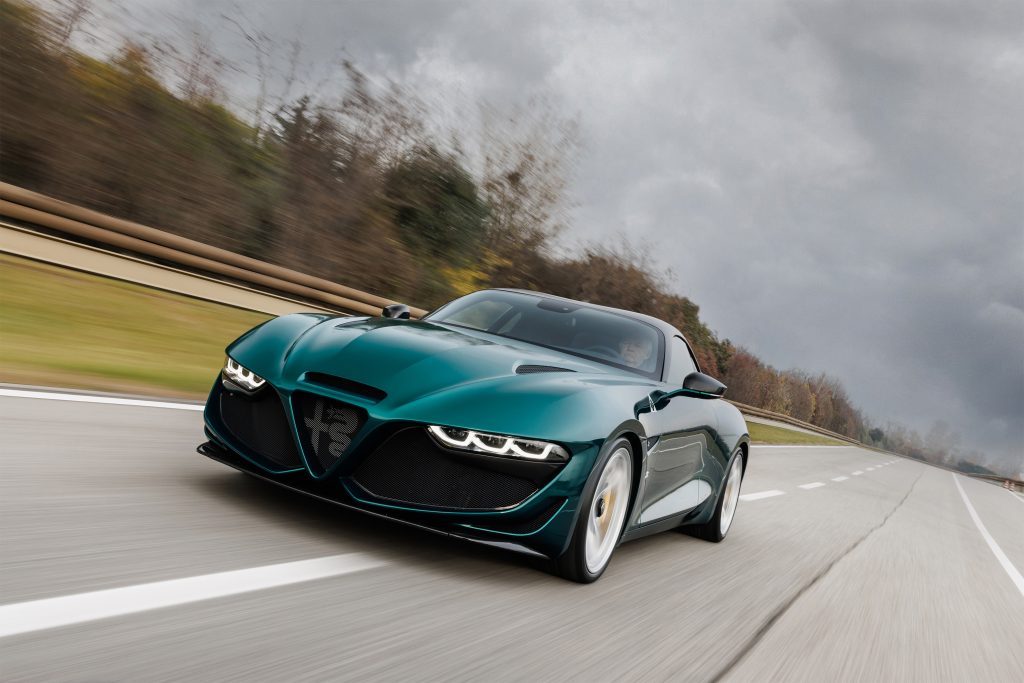
Speaking of the photoshoot reveal, Andrea Zagato stresses the importance of choosing a place within strong connections to Alfa Romeo and Zagato. “We chose La Pista circuit in Arese – formerly Alfa Romeo – where the Giulietta SZ and Giulia TZ were born. This track and the nearby museum are places that bear witness to how Alfa Romeo is the origin of Italian motor sports – and also baptised Ugo Zagato and Enzo Ferrari.”
Speaking more generally of the project, Andrea adds: “We are extremely satisfied with the collaboration we had throughout this period with Centro Stile Alfa Romeo. The teamwork was perfect – also with the marketing and communication department. It has been an exhilarating experience.”
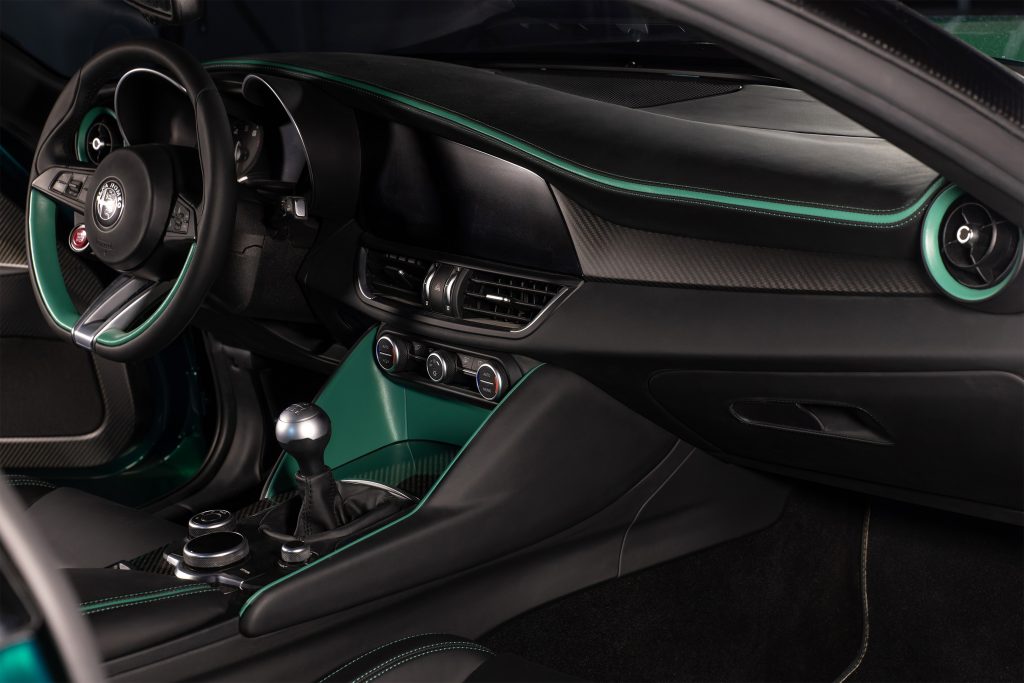
“For its centenary, Zagato has created a new ‘one-off’. The result is a car that fits perfectly into the historical path of the two marques, where the first objective was and is to combine beauty with performance,” explains Mesonero. “Alfa Romeo SZ – an acronym that evokes emotions – roots its origins in the deep history of coachbuilding, that of cars made with the sartorial care of those who dress [mechanicals] in a special way according to the thought, the culture of those ateliers that, like Zagato, in this case, have interpreted the Biscione brand.”
Alejandro describes the front end as being characterised by the 3+3 headlamp concept that’s not only a signature of new Alfa Romeos, but also on the SZ of the 1990s. “The cabin, totally in carbon, re-proposes another characteristic element of the brand with the two humps on the roof in search of height reduction, improving aerodynamics without affecting interior ergonomics,” he adds. “At the rear is the truncated tail, a typical Zagato bodystyle solution, aerodynamic and visually powerful.”
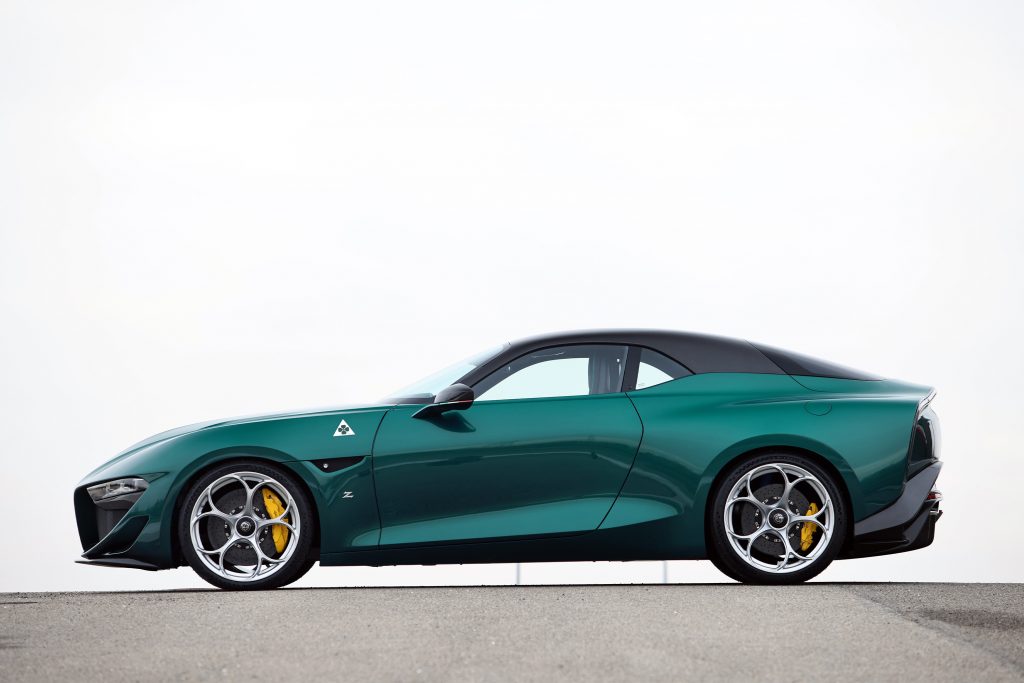
For Norihiko Harada, the car is a reflection of Zagato’s long association with Alfa Romeo. “In the more than 100-year glorious history of Alfa Romeo, no other company has contributed as much as Zagato, through 100 years of long and tireless collaboration. The way the two companies work together changes with the times, but their shared passion for creating design marvels has always paved the way for new eras,” he says.
“With the new Alfa Romeo Giulia SWB Zagato, this relationship has taken a further step forward: the Alfa Romeo Design Centre and Zagato have worked together passionately since the early days of design work. Alfa Romeo assimilated Zagato’s DNA while we sought to apply the future direction of the Biscione brand’s styling cues. What our collaboration has achieved in developing the design of this new Alfa Romeo Giulia SWB Zagato, which in today’s fast-moving automotive world is the classic task of a coachbuilder like Zagato to create a unique piece to meet the demands of passionate collectors. The relationship between Zagato and Alfa Romeo, together with the passion of the entire team of designers and engineers, proves that the long tradition can be carried on into the future.”
